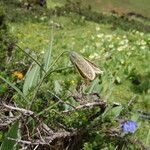| Therapeutic use
|
Antipyretics (bulb), Asthma (bulb), Bronchitis (bulb), Common cold (bulb), Cough (bulb), Dyspnea (bulb), Emaciation (bulb), Expectorants (bulb), Fever (bulb), Galactogogues (bulb), Genital diseases, female (bulb), Gout (bulb), Heart diseases (bulb), Hematologic diseases (bulb), Hemorrhage (bulb), Hypotension (bulb), Nervous system diseases (bulb), Pain (bulb), Increase physical endurance, strength and stamina (bulb), General tonic for rejuvenation (bulb), Stomach diseases (bulb), Tuberculosis (bulb), General tonic for rejuvenation (root), Asthma (stem), Bronchitis (stem), Tuberculosis (stem), Abscess (unspecified), Antidote(Spider) (unspecified), Asthma (unspecified), Cancer (unspecified), Cough (unspecified), Expectorant (unspecified), Fever (unspecified), Labor (unspecified), Lactogogue (unspecified), Marrow (unspecified), Poison (unspecified), Rheumatism (unspecified), Syphilis (unspecified), Tuberculosis (unspecified), Viscera (unspecified), Dysuria (unspecified), Hemorrhage (unspecified), Antidote(Scorpion) (unspecified), Bite(Snake) (unspecified), Eye (unspecified), Bronchitis (unspecified), Cancer(Thyroid) (unspecified), Tumor(Lung) (unspecified), Antipyretics (unspecified), Antirheumatic agents (unspecified), Aphrodisiacs (unspecified), Asthenia (unspecified), Diuretics (unspecified), Disorder of ejaculation (unspecified), Expectorants (unspecified), Galactogogues (unspecified), Hematemesis (unspecified), Lactation disorders (unspecified), Pain (unspecified), General tonic for rejuvenation (unspecified), Thirst (unspecified), Urination disorders (unspecified)
|



